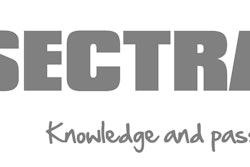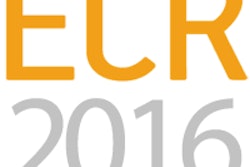
New requirements for patient radiation dose safety have many imaging managers rushing to update outdated imaging policies and procedures. But where does one begin? How should you identify all healthcare provider roles affected, and implement the changes at an enterprise level to ensure proper adoption and accuracy?
The practice of updating policies and procedures may need to be addressed throughout your organization, as regulatory requirements and new standards are being developed and adopted routinely for the healthcare industry as a whole. Regarding radiation safety initiatives specifically, the area of policies and procedures is only one of eight components of a robust radiation safety program, the others being workflow, standardization of imaging protocols, automated dose management solutions, risk management guidelines, education, radiation safety committees, and marketing.
Imaging policies and procedures cannot be updated alone; they should be developed simultaneously as an organization identifies and develops the other seven components of its radiation safety program.
Why your policies and procedures need a makeover
When was the last time your organization's imaging policies and procedures were updated? Do you know where your policy documentation is located? Is it sitting on a shelf next to the other imaging binders or hidden in the department's intranet SharePoint? This should be the first indication that your organization needs to review and identify the gaps in its existing imaging policies and procedures.
 Image courtesy of Ascendian.
Image courtesy of Ascendian.
Requirements for imaging policies and procedures have changed tremendously over the past three years. If your healthcare organization is regulated by the Joint Commission and/or operates in California and Texas, then your policies and procedures must be updated to meet regulatory requirements.
Aside from regulatory requirements, imaging policies and procedures should be reviewed and updated annually. The imaging industry is continuously influenced by emerging/advancing technologies, regulations, processes, and management decisions. These factors affect healthcare providers, and accurate workflows along with policies and procedures are required to ensure continuum of care and patient safety. It is imperative that imaging policies and procedures provide a strong foundation for caregivers and those who seek the imaging department's services, such as ordering physicians.
Unless your imaging policies and procedures were updated in the past 12 months, they may already be outdated. Old procedures were most likely based on the as low as reasonably achievable (ALARA) principle, which was the industry standard, but it served only as an "approach" and didn't provide any realistic imaging guidelines or dose thresholds.
Since then, the American College of Radiology (ACR) and the American Association of Physicists in Medicine (AAPM) have developed more defined imaging guidelines for recording the radiation dose output of imaging devices (as opposed to the patient's effective dose delivered). Furthermore, some states and all Joint Commission-accredited healthcare providers are required to follow specific imaging guidelines. Upon review of the Joint Commission 2014 standards and provisions found in the 2014 sustainable growth rate (SGR) patch, one can see the many components that must be included in an organization's imaging policies and procedures.
An overview of Joint Commission 2014 standards is provided below:
- By July 1, 2015, all individuals performing CT procedures must be registered with the American Registry of Radiologic Technologists (ARRT) or Nuclear Medicine Technology Certification Board (NMTCB).
- Healthcare providers must have a robust internal radiation safety program, which includes a strong ongoing education/training component powered by Image Gently and Image Wisely.
- Healthcare providers who provide CT imaging services must report patient radiation dose, such as with CT dose index (CTDI) and dose-length product (DLP) information, in the diagnostic imaging report, as well as make it part of the patient's medical record, available via the PACS, electronic health record (EHR), etc.
- With respect to performance elements, healthcare providers must have adult and pediatric CT imaging protocols benchmarked and reviewed annually by a physicist. ACR and AAPM benchmarks are recommended but not enforced.
The Protecting Access to Medicare Act (SGR fix) legislation passed in April also included provisions affecting radiation dose management, such as the following:
- Ordering physicians must use decision support for advanced imaging procedures.
- Patient radiation dose safety controls and levels are stricter and improved.
- CT equipment must meet National Electrical Manufacturers Association (NEMA) standards.
Developing new imaging policies and procedures
So, you've received your marching orders from the powers that be to develop new policies ... now what? First, as a healthcare provider, does your organization meet the requirements stated above? If not, how will you get your organization there, and what will it take?
As previously mentioned, your imaging policies and procedures have to be developed simultaneously as you develop your internal radiation safety program. By developing an inclusive program that accounts for each of the multiple critical components of a radiation safety program, you will build the foundation by which your policies and procedures will guide and regulate your organizational practices to ensure the best patient safety possible.
Begin by outlining the existing workflow for all roles affected by and involved in the radiation safety program: technologists, ordering physicians, radiologists, medical physicists, risk management, etc. This must include the technical and clinical components of the caregiver's workflow.
After the state of your current workflow has been identified, begin developing your future workflow with the proper checks and balances for decision and risk management support embedded in everyone's workflows. Imaging device protocols should be reviewed, and dose output by device manufacturer, exam type, patient type, and phantom size must be captured and implemented in the policies and procedures.
The organization should collaborate with risk management representatives and the chief of physicians in developing a decision-support workflow and model, and implement the change throughout the enterprise. Developing new imaging policies and procedures is a large task and must encompass everything from automated dose management workflow to educating and consulting staff members and patients.
Implementing and managing new policies and procedures
When implementing your imaging policies and procedures, one must remember that it's not just the policies and procedures being implemented, it's an entire program. The implementation strategy will fail if there are holes in the effort.
Regardless, as a healthcare organization embarks on a radiation safety program initiative, it must be transparent to its peers and organization. For successful end-user adoption, whether it is just an update to your policies or an entirely new patient radiation safety program, one must begin with clear and adequate communication to all members of the organization affected by the change.
As a program manager, be prepared with clear and concise workflows for all caregivers involved, and develop an ongoing staff and patient education/training process. Educating caregivers about the big picture regarding radiation safety and including them in organizational discussions and workflow enhancements will allow clinical end users to become involved in radiation dose management initiatives and more readily adopt new standards.
It is imperative that healthcare organizations proactively seek to enhance patient-focused radiation safety efforts by going further than simply meeting compliance regulations. Key stakeholders within an organizationally defined radiation safety committee should be driving clinical teams to become educated on the many components of a robust radiation safety program. After assessing workflows within your current clinical environment and identifying gaps or changes that need to be addressed, the implementation of new processes or IT enhancements can begin.
The revision of CT protocols and imaging techniques being utilized by technologists is another key step in ensuring the best patient care is being provided safely and appropriately within your radiology department. Dose thresholds should be regularly evaluated and maintained in alignment with recommended industry standards.
The rules and practices for all individuals supporting the radiation safety program should be clearly defined, including risk management guidelines to be followed if a patient's dose exposure exceeds the organization's defined thresholds. The risk management guide should be adhered to in the event of any radiation safety incident to ensure incidents are addressed and rectified in a timely manner with the proper resources involved.
If you have implemented any sort of automated dose management solution (Radimetrics, DoseMonitor, Sectra, GE, Imalogix, etc.), you will be able to trend and report your organization's imaging practices and protocols almost immediately, depending on the data available in the system (some systems are able to process legacy data). As a program manager and keeper of the policies and procedures, you must review and update the data reported by the automated solution and update your imaging policies and procedures as they relate to the information discovered at least for the first six to 12 months. After the automated dose data reports normalize, program managers can begin the annual policies and procedures update cycle.
As you continue to develop your organization's internal patient radiation safety program, complete these three simple statements:
- Today, my patient radiation dose safety program looks like __________.
- I would like my patient radiation safety to be __________.
- I will measure the success of my patient radiation dose safety program by __________.
Having a third-party organization review your policies and procedures can give you a fresh set of eyes, not only on the documents but also the processes and technology components that will drive true change across your enterprise.
Now more than ever, radiation safety initiatives are at the forefront of the healthcare industry and are on display both nationally and internationally. Empowering your organization with a fully codified radiation safety awareness initiative and strong dose management program exemplifies a genuine commitment to patient safety and a solid foundation for offering best practices in radiology and imaging services.
Sources
- House of Representatives passes 12-month SGR patch; Numerous ACR supported imaging provisions included in legislation. American College of Radiology website. http://www.acr.org/Advocacy/eNews/20140328-Issue/House-of-Representatives-Passes-12-Month-SGR-Patch. Accessed June 6, 2014.
- Prepublication standards, diagnostic imaging. The Joint Commission website. http://www.jointcommission.org/standards_information/prepublication_standards.aspx. Accessed June 6, 2014.
Neomi Mullens is a project manager at Ascendian Healthcare Consulting. She can be reached at [email protected]. Neil Singh is a senior consultant at Ascendian; both are frequent speakers and published contributors on the subject of enterprise dose management and tracking. Visit the Ascendian website for more information.
The comments and observations expressed herein are those of the authors and do not necessarily reflect the opinions of AuntMinnie.com.




















